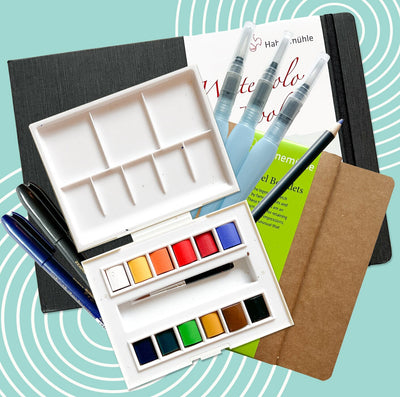Bas-relief, pronounced bah-relief and also known as low-relief, originally stems from Italian phrase bass-relievo. Essentially this is a sculpture that is always projecting from its surrounding surface. The projection is subtle, and the modeled form is never undercut. Bas-relief is just one type of many in this style. It’s worth pointing out that we see this art form in everyday life, like on the coins we use for currency such as quarters and pennies etc. Other styles such as mid-relief and high-relief provide for different expressions. More specifically, bas-relief is also a sculpting technique where you work on a panel of clay (amongst other materials), sculpting to raise the figures or designs above the surface. Today we will begin with bas-relief, as it is a great introduction for any beginner interested in relief sculpting. Created by carving away material such as wood, stone, ivory, jade, etc. or adding material to the smooth surface of clay, we can choose our material to fit our desired artwork.

The Ascension with Christ giving the keys to St Peter, Donatello 1428
According to Pigmentti.com, we are essentially sculpting onto a 2D plane to create and accentuate figures and objects, producing a 3D appearance which can be viewed from all angles with little distortion. Alternatively, material can also be carved from a 2D plane, a technique called Graffito. The prominent figures that have been carved into or added to the surface remain fairly shallow. If the subject appears to be more than halfway raised from its background, this is classed as high-relief. So remember, shallow means low-relief, and anything more than halfway raised is high-relief. Interestingly enough, bas-reliefs are some of the first artistic creations by man that have been discovered. These early works are often found treated with colours to further accentuate the relief, and found on walls of caves. These are called Petroglyphs. Ancient Egyptians and Assyrians were next to adopt this style of work in their stone buildings and pyramids, leading to an influence in Greek and Roman buildings such as the Parthenon frieze which adorns the upper part of the Parthenon’s naos and features relief sculptures of Poseidon, Apollo, and Artemis. -Pigmentti.com

Battle Of Centaurs, Michelangelo
During Medieval times, ranging from 5th to the 15th century, the popularity of bas relief continued to thrive. Perhaps its success was due in part to the fact that it had quite a specific agenda, being that it was used to celebrate the lives of important religious events and figures. Religion at this time was a constant statement in art, making it no surprise that this sculpting technique became popular in churches. Romanesque houses of worship were the cornerstone for bas-relief displays, allowing this celebration of religious events and figures. According to Pigmentti.com, This was one of the first moves into Western culture and allowed bas-relief to flourish before becoming a staple in luxury design. During the 14th to the 17th centuries, also known as The Renaissance period, we saw the Great Masters beginning to adopt bas-relief. Legends like Donatello and Michelangelo made some incredible pieces like The Battle Of Centaurs and Madonna and Child. Donatello for example, combined his work with high-relief to create his unique perspective. Michelangelo made the Battle Of Centaurs under the commission of Lorenzo de' Medici. Medici was a statesman of the time, and supports the notion that religious figures should be celebrated and was part of the nation’s agenda.

Madonna and Child, Donatello 1435
As we move into the 19th century we see legendary historical monuments such as the sculpture on the Parisian Arc de Triomphe elevated by bas-relief. This takes us into the modern age of this sculpting style. Here, we often find smaller works done with bas-relief. In today’s culture, the combination with high relief is also very common, and as we read earlier, this combination was largely popularized by Donatello. A sense of depth brings a richer perspective towards the piece. One of the most exciting areas bas-relief has been used in today’s culture is that of interior design. Particularly in more luxurious settings, bas-relief is commonly used to create focal points within a room, as well as enhancing walls, ceilings, domes, doorways, columns, water fountains and other indoor architectural features, according to pigmentti.com. How interesting that something once used to support the stature and power of religious iconography has moved into the hands of artists from different levels and perspectives. Interior design allows for landscapes, narratives full of whimsy and even architectural details to cross paths with bas-relief.
Impressionism and modernism are easily adopted into this art form, largely due to the detailed nature of bas-relief, and has allowed the art form to remain contemporary. Updates dependent on the clients’ wishes are easily executed in modern bas-relief design. Art Deco, Art Nouveau and Arts & Crafts features are proving to be largely popular amongst design ideas in the current market according to pigmentti.com.
Below we see a contemporary example of bas-relief by the great sculpture artist Sutton Betti. It’s important to see the way we are still expressing ourselves today with such an ancient art form. Sutton explains, “Depending on what it is I’m trying to accomplish, [it] will dictate if it is to be high or low [relief].” He goes on to say that using a photograph as a reference for their sculpture proves helpful. “For example, if there is some movement in the composition I tend to enjoy making a high-relief. This kind of relief allows me to focus on anatomy, but seems to make it harder to do a likeness well, mostly because I am using just one photograph for reference. Low-relief sculptures tend to take me a little less time to make, but I feel more confident if it’s more of a portrait I am after.” Inspired by Michelangelo himself after a trip to Italy, Betti started his career in sculpting circa early 2000’s and has created numerous works, including both bas and high-relief’s. Currently living in Colorado where He continues to sculpt, You can learn more about this contemporary relief and sculpture artist at https://www.suttonbetti.com/about/.

Allysa by Sutton Betti
We hope that November’s smart art box brings you an exciting first start with bas-relief sculpting. Remember to keep inspiration at the heart of your work, especially when beginning something new. Whether your taste lies as far back as the great masters like Michelangelo and Donatello, or with the modern simplicity we find in the amazing Sutton Betti, this new embarkment called bas-relief will be fun and exciting. With the combination of this month’s materials, and your desire to create, we know your sculptures are going to be amazing this month. Use the following hashtags and share on Instagram for a chance to be featured on our blog. #smartartbox #smartartproject #smartartweekly
November’s Smart Art Box
1. Different sculpting tool sets
- 8 piece acrylic paint set
- Brush set
- Sculpey Air Dry Clay
- MDF boards


